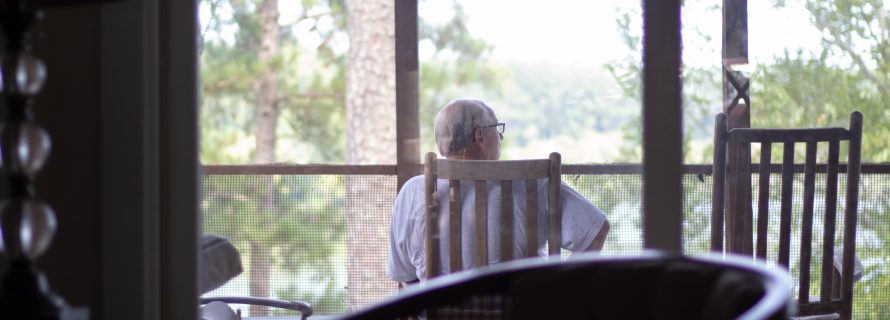A Brief Overview Of Aging In Place

As you grow older, you might begin wondering how you’ll be able to live in your home, or if you’ll even be allowed to live on your own. In fact, according to Merck, about 28% of older adults live alone in the U.S. – that’s 14.7 million of the population!
While living alone can be a nightmare for some people, others rather have the freedom to live on their own rather than being in a nursing home. This is called “aging in place.”
In this article, we will explore what “aging in place” means, and what can be done to make a home sustainable for independent living, if you or an elderly loved one wish to live on your own.
Define “Aging In Place”
Aging in place refers to living on your own as you grow older. Rather than living in a nursing home, you prefer to live in your own home. With that said, you’ll need to consider adding the necessary modifications in the home, since easy navigation through your home is essential. Therefore, consider the following modifications that you and your family and friends can make now:
Improve Your Lighting
An inexpensive solution, you can ensure that you have plenty of lighting in the home by placing lights in the right places. Your bedroom, bathroom, kitchen, and living room are the best places for lighting. If you have a basement or garage, consider placing a light there if you frequent them.
Placing lights in the rooms/areas you frequent can prevent stumbling or falling, or even misplacing things. Even placing lighting in the stairways can help prevent any accidents going up or down.
Simple Fixtures And Safety
Fixtures are essential to the home, so that you can do things and make your home more livable. Having said that, consider having the following fixtures in your home:
- Consider oversized light switches over small ones.
- Automated garage door openers are ideal, if you have a garage or a basement.
- Grab bars and hand rails prevent falls.
- Cord covers prevent trips and falls.
- Digital displays are ideal for home phones, remote controls, etc.
Fix Your Floor
Now, the last thing you want is for you or a loved one to fall and get hurt, due to faulty flooring. From curly-edged carpeting to very loose rugs, the flooring may pose a potential danger to your in-place living.
There are many inexpensive flooring DIYs to consider when fixing your floor:
- Making your flooring visible when walking around your home (Ex. Light-colored flooring to contrast darker rooms; or dark-colored flooring to contrast light.)
- Securing your rugs, so that they don’t snag your feet and make you trip and fall; AND
- Installing anti-slip flooring (i.e., ceramic tiles, vinyl, etc.)
Make Renovations ADA-Approved
The Americans with Disabilities Act (ADA) has a set of requirements for people to follow, should they think about upgrading a home for independent elderly living. It’s important to abide by ADA’s rules, so that you and your elderly loved one can stay safe at home, even if it means adding on protections in the home. Widened doorways (at least 36 in. wide) and stairlifts are recommended by ADA, since they ensure physical safety for the elderly inhabitant.
Implement Home Security
Nowadays, home security systems have become the norm in many homes, including aging-in-place living arrangements. Therefore, invest in a good security system, which takes into account:
- Break-ins
- Fires
- Carbon monoxide
- Sudden health problems (i.e. falls, heart attacks, etc.), and so on
Take Advantage Of Technology
Finally, technology doesn’t have to be reserved for the younger population. In fact, elders can take part in technology in several ways.
- Voice recognition has paved the way for allowing automated services and voice assistants (i.e. Alexa) to do things (i.e., scheduling doctor visits, setting medication reminders, etc.) with simple commands.
- Light switches are now designed with the arthritis-inflicted in mind.
- Key finders and keyless doors make locating keys and securing doors a breeze.
- Smart lights have an “away” mode, to which the lights will turn on whenever there’s sound detected.
The list goes on…
Conclusion
As you or a loved one consider living on your own as you enter your golden years, it’s important to make your home golden-years-ready. By following this brief overview, you’ll be sure to create a safe and comfortable environment that you can call home for life.
About The Author: Alex Dubinski is a writer and editor at Speech writing service and Research papers UK. As an online marketing strategist, he helps companies improve their online presence and marketing strategies.
Photo by Ian Noble on Unsplash
- Additions and New Construction
- All Exteriors
- Alterations
- Basements
- Bathrooms
- Customer Service
- Customer Stories
- Decks
- Design & Planning Show
- DIY
- Doors
- Educational Resources
- Extreme Makeover Home Edition
- Fashion Show
- General Remodeling
- Green Living
- Handyman Home Services
- Home Decor
- Home Entertainment
- Home Improvement
- Home Improvements
- How to Tips
- In The Community
- Kitchens
- Off-the-Wall Remodeling Stories
- Remodeling
- Resources
- Roofing
- Siding
- Social Media
- Sunrooms
- Tips & Tricks
- Trends
- Windows

